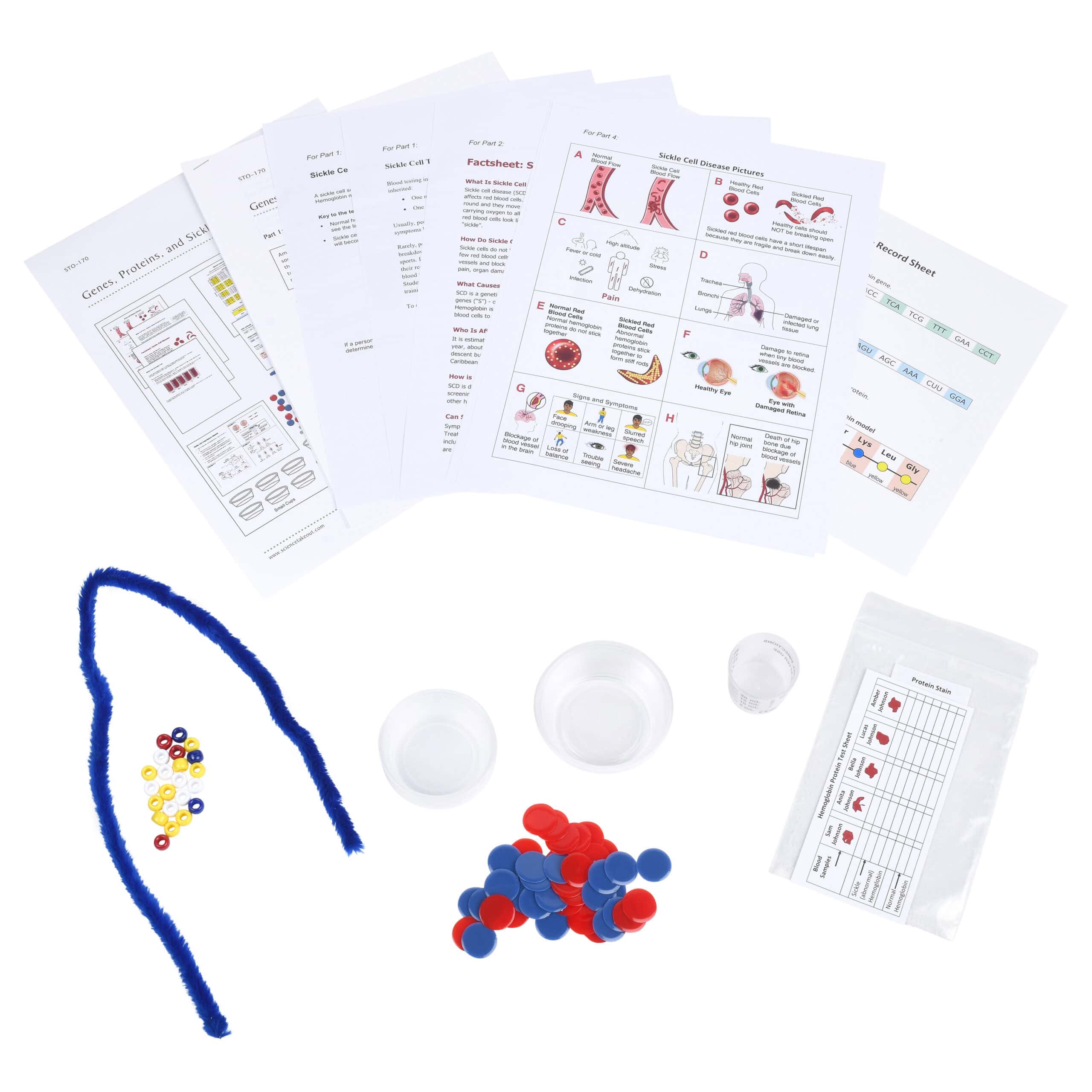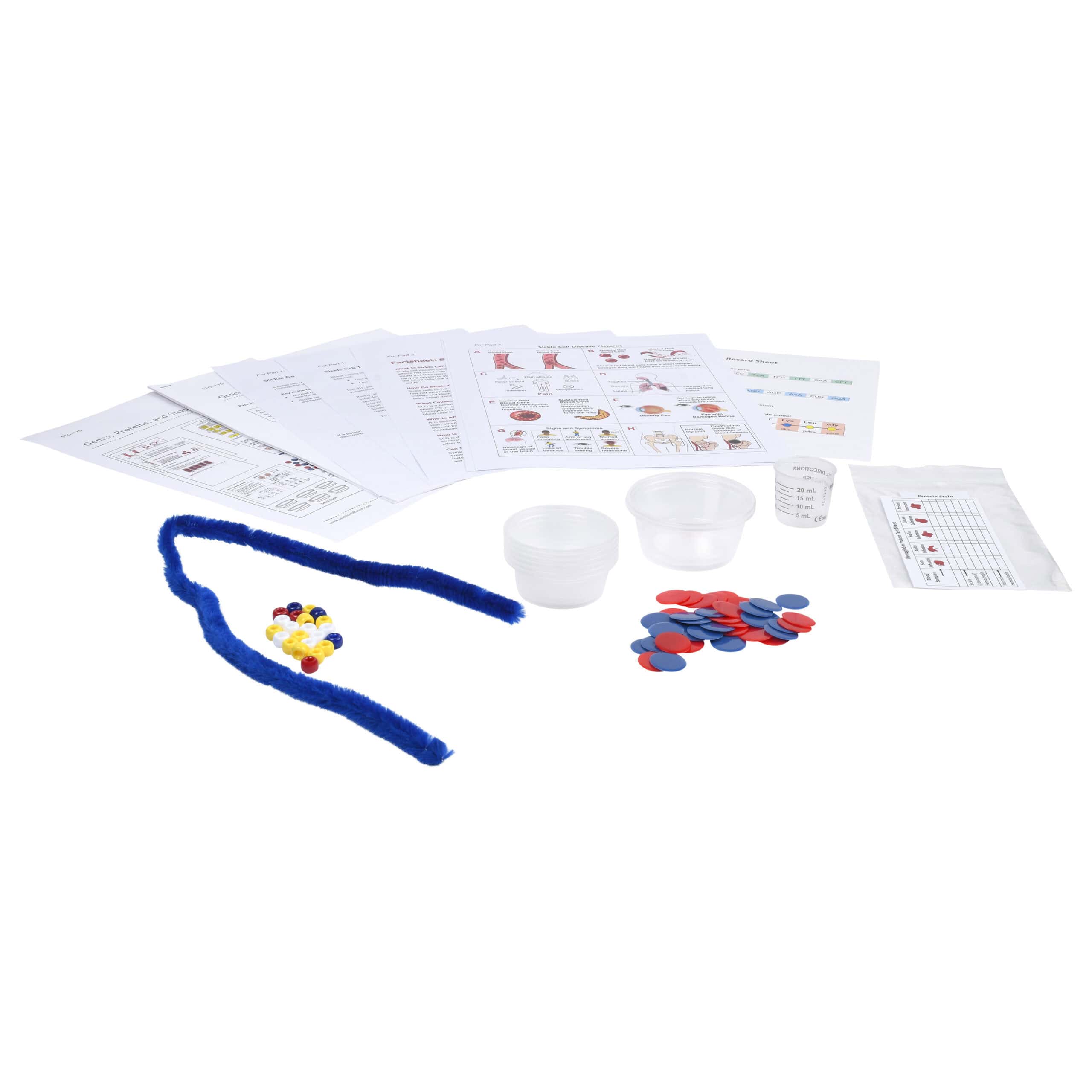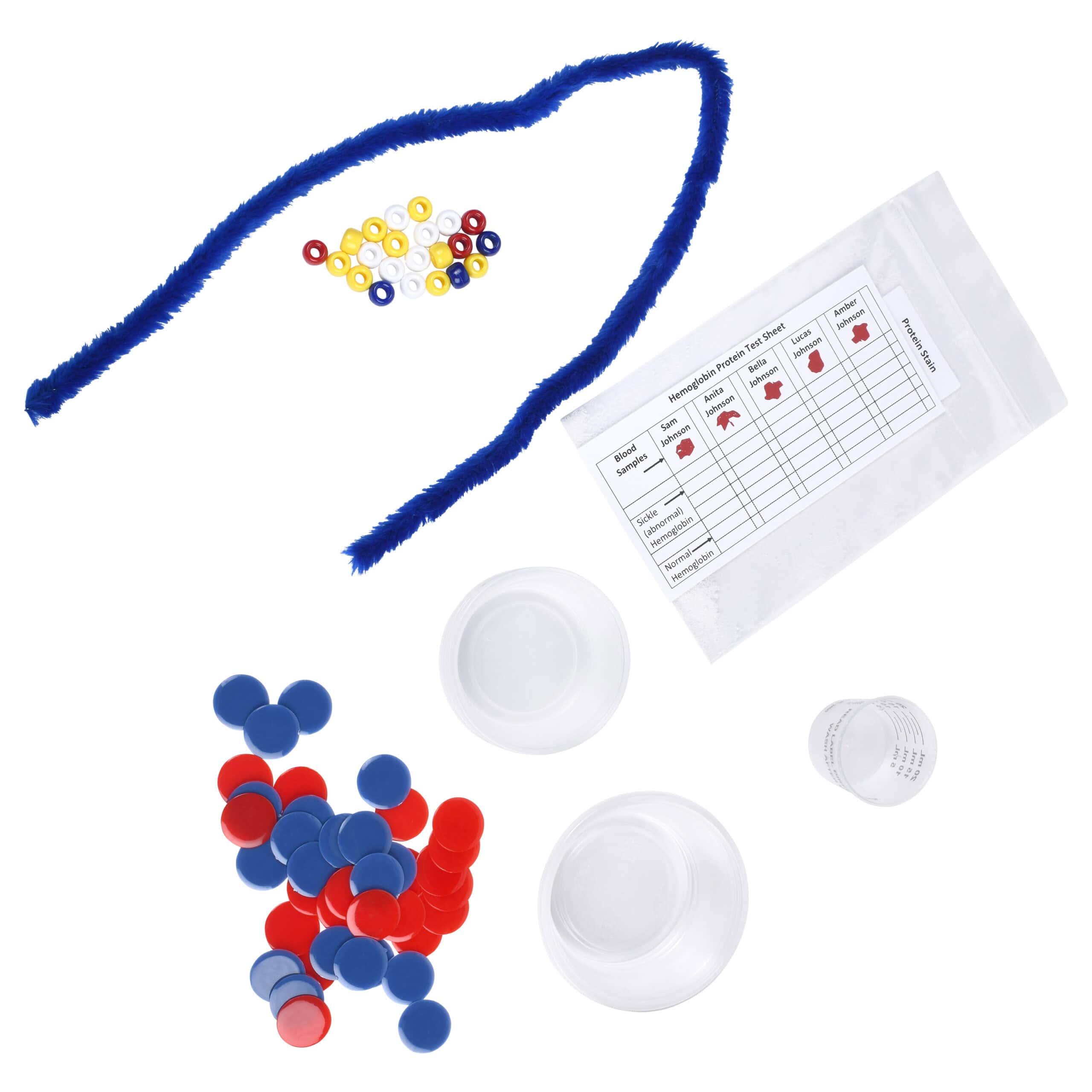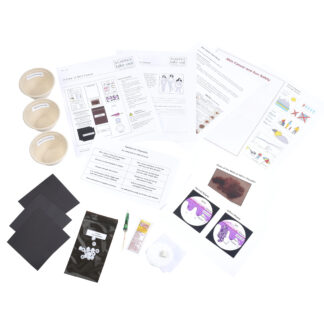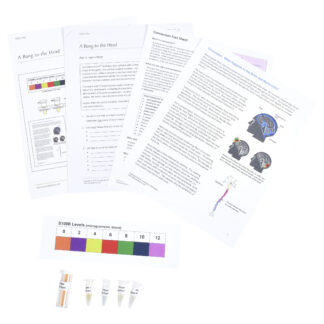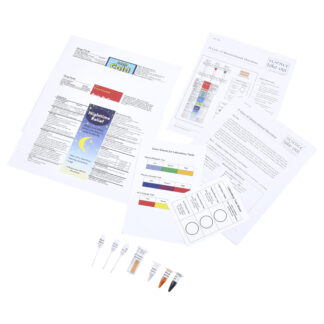Genes, Proteins, and Sickle Cells
$19.95 – $162.95
Explore the genetics and molecular biology of sickle cell disease.
Follow the story of a teen and her family as they learn how a gene mutation might affect them.
- Conduct simulated tests for sickle cell trait and sickle cell disease.
- Model how “A” and “S” genes produce normal and abnormal hemoglobin.
- Use models to reveal the risks of sickle cell disease for future children.
Kit Includes
- Sickle Cell Solubility Test sheet
- Sickle Cell Trait – Student Athlete Permission Form
- Factsheet: Sickle Cell Disease
- Sickle Cell Disease Pictures
- Genetic Code Chart
- Sickle Cell Inheritance Models sheet
- From Genes to Protein – Record Sheet
- Hemoglobin Protein Test Sheet (simulated)
- Protein stain (simulated)
- Graduated measuring cup
- Chenille stem
- Red, blue, white, and yellow beads
- Yellow sticker
- Red and blue plastic chips
- 2 large cups
- 6 small cups
Also Required
- Red, blue, and yellow colored pencils, markers, or crayons (optional)
- Water
- Safety goggles
Quantity Discounts
Kits:
- 1 – 9 kits: $19.95 each
- 10 – 24 kits: $18.95 each
- 25+ kits: $17.96 each
Unassembled:
- 1 – 9 packs: $162.95 each
- 10+ packs: $154.80 each
Refills:
- 1 – 9 packs: $41.95 each
- 10+ packs: $39.85 each
Correlation to Next Generation Science Standards (NGSS) Shop by NGSS »
Performance Expectations:
HS-LS1-1. Construct an explanation based on evidence for how the structure of DNA determines the structure of proteins which carry out the essential functions of life through systems of specialized cells.
HS-LS1-2. Develop and use a model to illustrate the hierarchical organization of interacting systems that provide specific functions within multicellular organisms.
HS-LS3-1. Ask questions to clarify relationships about the role of DNA and chromosomes in coding the instructions for characteristic traits passed from parents to offspring.
HS-LS3-2. Make and defend a claim based on evidence that inheritable genetic variations may result from: (1) new genetic combinations through meiosis, (2) viable errors occurring during replication, and/or (3) mutations caused by environmental factors.
Science & Engineering Practices
Developing and using models - Develop and/or use multiple types of models to provide mechanistic accounts and/or predict phenomena, and move flexibly between model types based on merits and limitations.
Analyzing and interpreting data - Apply concepts of statistics and probability (including determining function fits to data, slope, intercept, and correlation coefficient for linear fits) to scientific and engineering questions and problems, using digital tools when feasible.
Obtaining, evaluating, and communicating information - Critically read scientific literature adapted for classroom use to determine the central ideas or conclusions and/or to obtain scientific and/or technical information to summarize complex evidence, concepts, processes, or information presented in a text by paraphrasing them in simpler but still accurate terms.
Constructing Explanations - Construct and revise an explanation based on valid and reliable evidence obtained from a variety of sources (including students’ own investigations, models, theories, simulations, peer review) and the assumption that theories and laws that describe the natural world operate today as they did in the past and will continue to do so in the future.
Disciplinary Core Ideas
LS1.A: Structure and Function
- Systems of specialized cells within organisms help them perform the essential functions of life.
- All cells contain genetic information in the form of DNA molecules. Genes are regions in the DNA that contain the instructions that code for the formation of proteins, which carry out most of the work of cells.
- Multicellular organisms have a hierarchical structural organization, in which any one system is made up of numerous parts and is itself a component of the next level.
LS3.A: Inheritance of Traits
- Each chromosome consists of a single very long DNA molecule, and each gene on the chromosome is a particular segment of that DNA. The instructions for forming species’ characteristics are carried in DNA. All cells in an organism have the same genetic content, but the genes used (expressed) by the cell may be regulated in different ways. Not all DNA codes for a protein; some segments of DNA are involved in regulatory or structural functions, and some have no as-yet known function.
LS3.B: Variation of Traits
- In sexual reproduction, chromosomes can sometimes swap sections during the process of meiosis (cell division), thereby creating new genetic combinations and thus more genetic variation. Although DNA replication is tightly regulated and remarkably accurate, errors do occur and result in mutations, which are also a source of genetic variation. Environmental factors can also cause mutations in genes, and viable mutations are inherited.
- Environmental factors also affect expression of traits, and hence affect the probability of occurrences of traits in a population. Thus the variation and distribution of traits observed depends on both genetic and environmental factors.
Crosscutting Concepts
Structure and Function - Investigating or designing new systems or structures requires a detailed examination of the properties of different materials, the structures of different components, and connections of components to reveal its function and/or solve a problem.
Cause and Effect - Empirical evidence is required to differentiate between cause and correlation and make claims about specific causes and effects.
Systems and System Models - Models (e.g., physical, mathematical, computer models) can be used to simulate systems and interactions—including energy, matter, and information flows— within and between systems at different scales.
